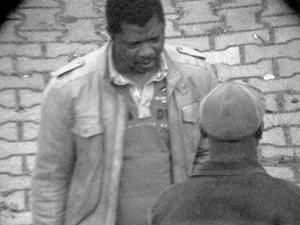Uri Gershuni | Temporary Relocation | The Bronner Residency
Uri Gershuni’s presentation, “In the Court of the White Lady,” features three photographic series created during his residency in Düsseldorf. Each diptych in the series “The White Lady” is composed of a photograph showing the German laundry detergent factory Henkel and a copy of that photograph after it had been laundered. The White Lady, created in 1922, was the advertising image of the factory’s Persil detergent, associating cleanliness with spotless family values. Such values were later to correspond with Nazi promotion of racial purity and Aryan vigor. Gershuni’s series “Nothing but Darkness” consists of episodes in a parking lot near the factory, shot from the window of his studio. It focuses on the grim reality of life in the marginal areas of big cities, where foreign workers, refugees, and marginalized people live – thereby raising questions about the status of such people in the liberal, Western welfare state. The series “A Hundred and Twenty” shows semen stains on photographic paper. The potent material becomes a stain but, at the same time, creates the artistic image. The series’ title refers to the number of images it comprises – corresponding to the number of days in the artist residency – as well as to the number of years of life wished on people in Judaism. The juxtaposition of the three series charges the space with poetic tension, straddling the pure and untainted on the one hand and the impure, abject, or blemished on the other.
